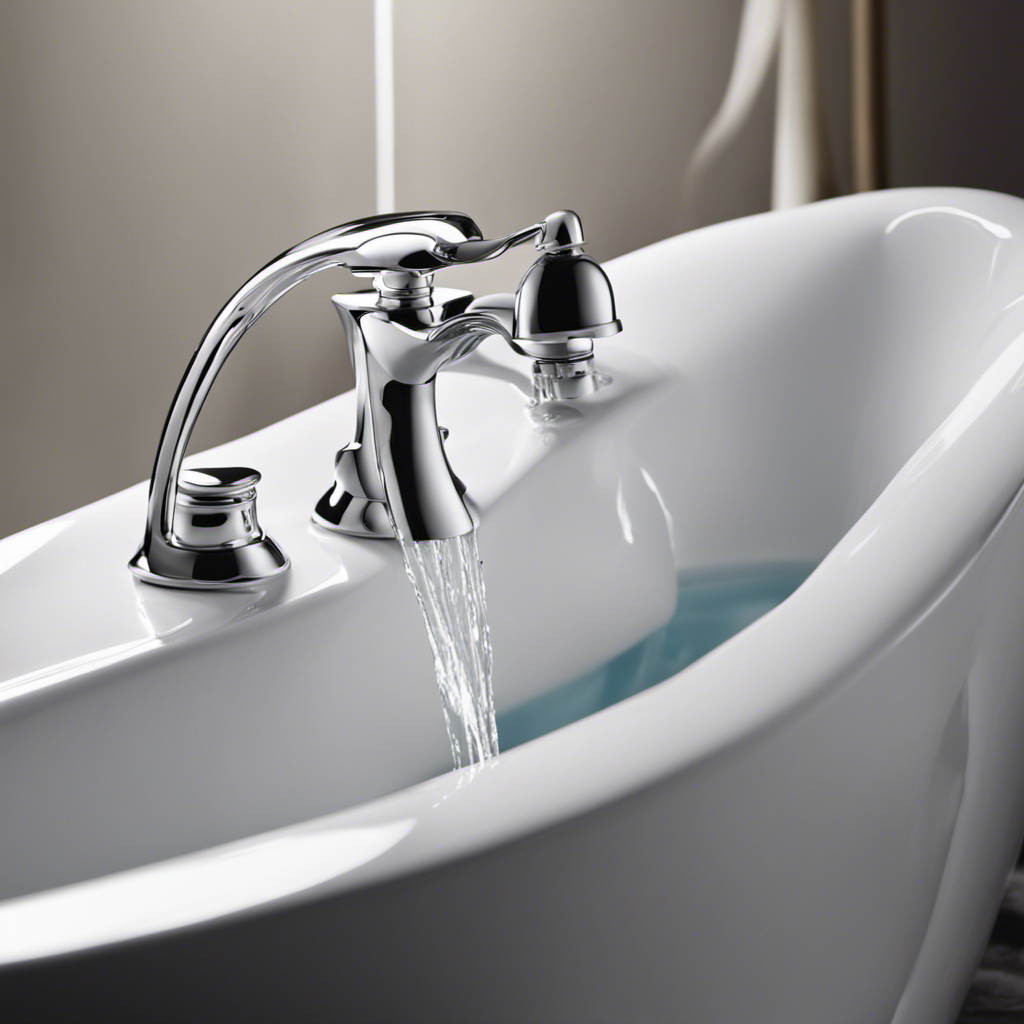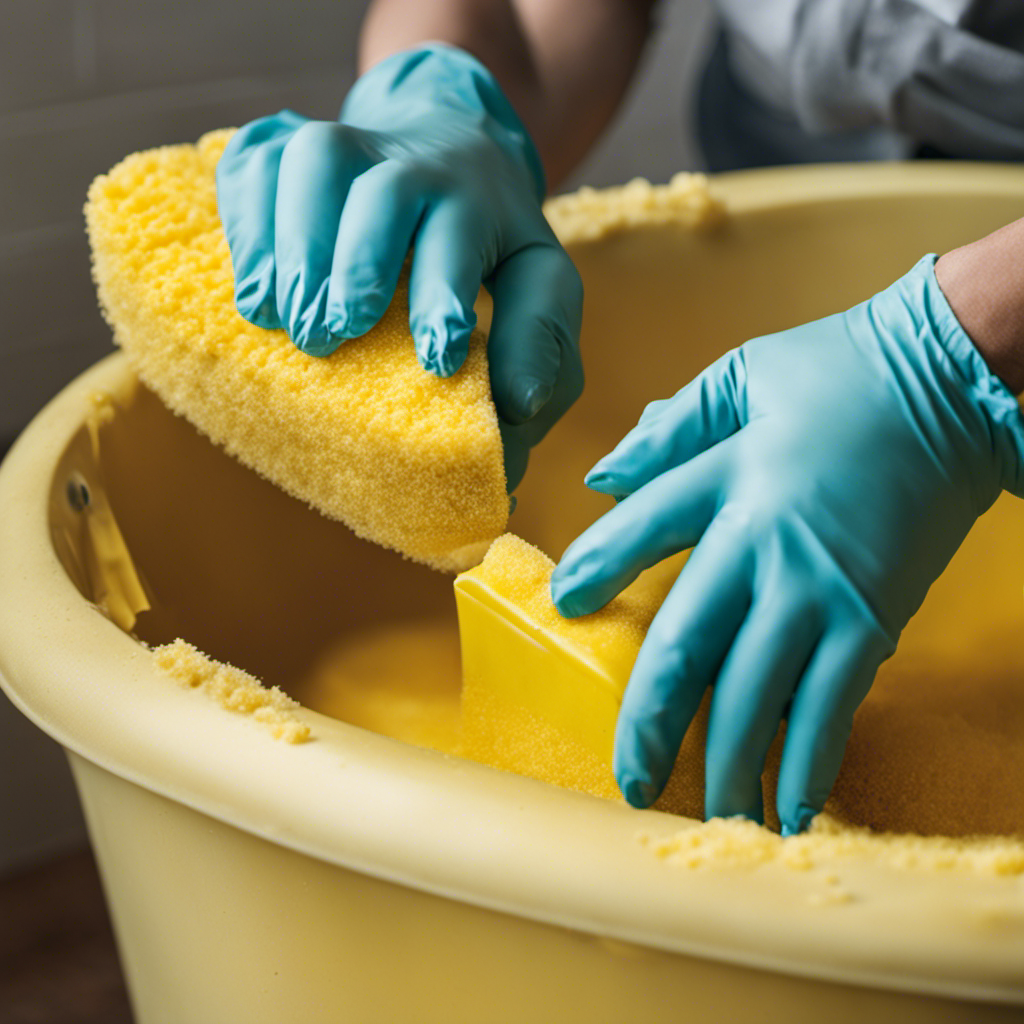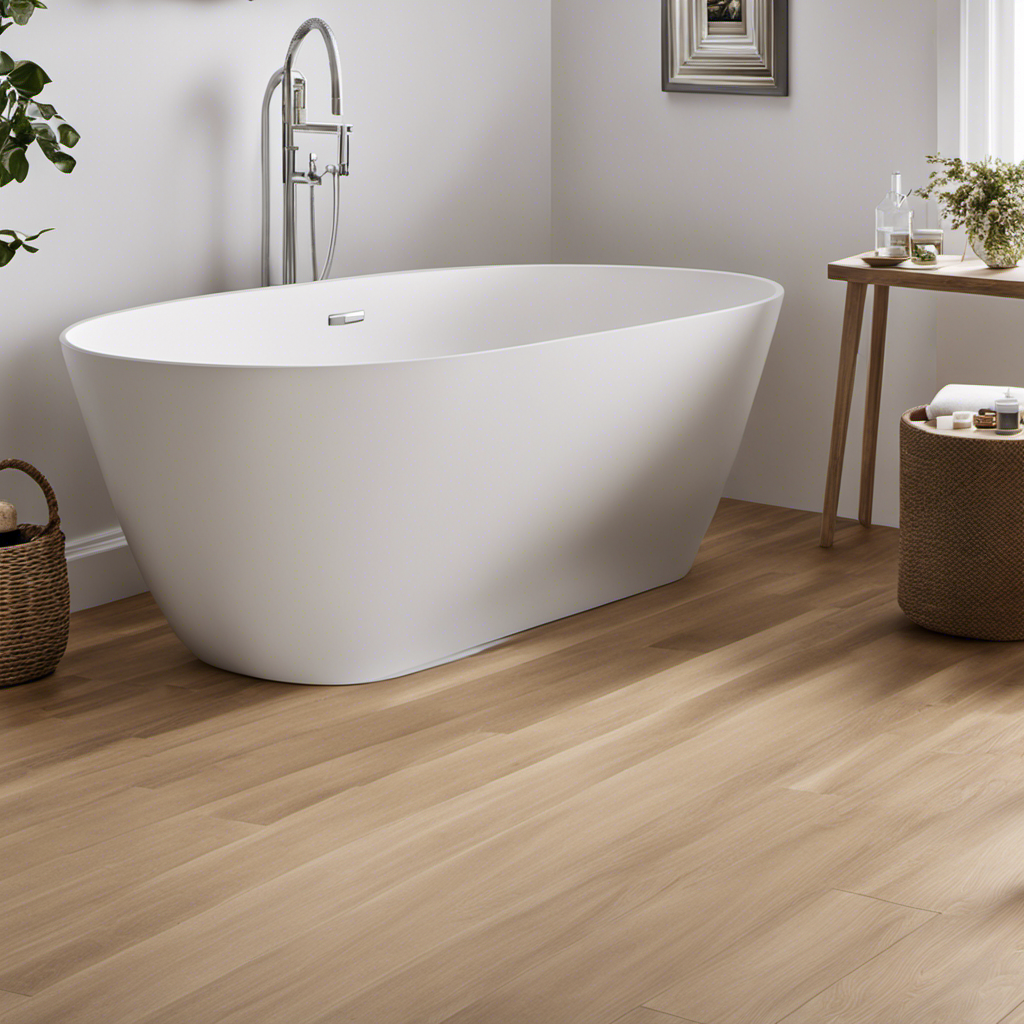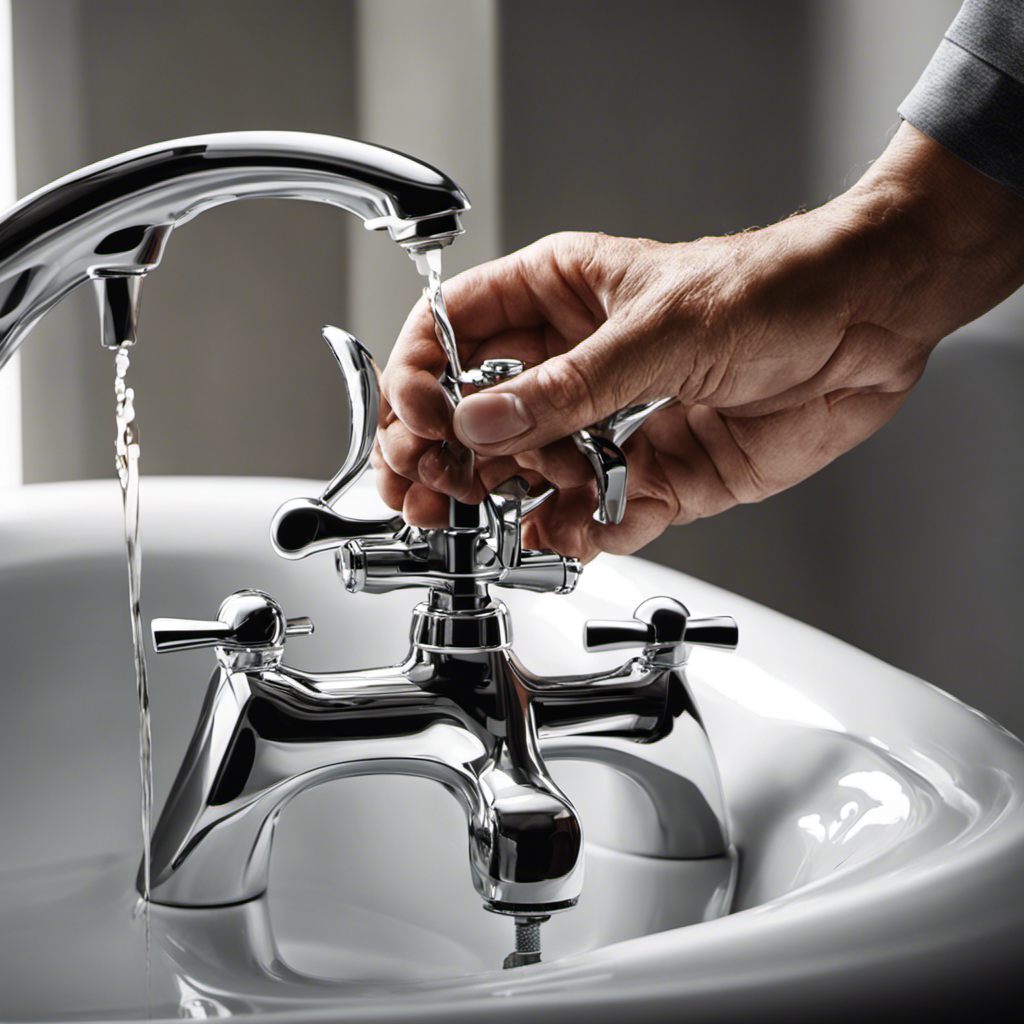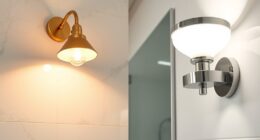Do you find yourself frustrated with weak water pressure in your bathtub faucet? Don’t worry, you’re not alone. Luckily, there are simple steps you can take to increase that water pressure and enjoy a more satisfying bathing experience.
In this article, we will guide you through the process of understanding the causes of low water pressure, checking for blockages in the faucet, adjusting the water pressure regulator, installing a high-pressure showerhead, and knowing when to call a professional plumber for assistance.
Get ready to say goodbye to lackluster showers and hello to powerful streams of water.
Key Takeaways
- Clogged aerator may restrict water flow in the bathtub faucet
- Adjusting the water pressure regulator can potentially increase water pressure
- Installing a high-pressure showerhead can improve the water pressure in the bathtub faucet
- If unsure or uncomfortable with adjustments, it is recommended to call a professional plumber for assistance.
Understanding the Causes of Low Water Pressure
To understand why you’re experiencing low water pressure in your bathtub faucet, you need to know the possible causes.
Common water pressure issues can arise due to various reasons. One of the most common causes is a clogged aerator, which can restrict the flow of water.
Another possibility is a faulty pressure-reducing valve, which regulates the water pressure in your plumbing system. Additionally, it could be a problem with the water supply line or a malfunctioning pressure regulator.
Troubleshooting low water pressure requires a thorough examination of these potential causes. By identifying the root issue, you can take the necessary steps to resolve it and increase the water pressure in your bathtub faucet.
Now, let’s move on to checking for blockages in the faucet to further troubleshoot the problem.
Checking for Blockages in the Faucet
Check if there are any blockages in your faucet by removing the aerator and inspecting it for debris. Cleaning the aerator is a simple yet effective way to address low water pressure issues in your bathtub faucet.
The aerator is a small device located at the tip of the faucet that controls the flow of water and can easily become clogged with sediment or mineral buildup over time. By removing the aerator and cleaning it, you can ensure that water flows freely and without any obstructions.
To clean the aerator, follow these steps:
- Turn off the water supply to the faucet.
- Unscrew the aerator from the faucet using pliers or a wrench.
- Inspect the aerator for any debris or buildup.
- Rinse the aerator under running water to remove any dirt or sediment.
- Reattach the aerator to the faucet and turn on the water supply.
Adjusting the Water Pressure Regulator
Adjusting the water pressure regulator can help resolve any remaining issues with low water flow in your bathtub. Here are some steps to guide you through the process:
- Locate the water pressure regulator, usually found near the main water supply line.
- Use a wrench to turn the adjustment screw on the regulator clockwise to increase the pressure or counterclockwise to decrease it.
Start by making small adjustments and testing the water flow in your bathtub after each adjustment. If turning the adjustment screw doesn’t improve the water pressure, you may need to replace the pressure regulator altogether. Consider consulting a professional plumber if you’re unsure or uncomfortable with adjusting the regulator yourself.
Installing a High-Pressure Showerhead
Installing a high-pressure showerhead can greatly improve your shower experience. It’s important to consider the benefits of high water pressure when choosing the right showerhead. A high-pressure showerhead delivers a strong, invigorating stream of water that can help you feel refreshed and rejuvenated. It provides a more thorough and efficient cleansing experience, allowing the water to easily rinse away soap and shampoo.
With increased water pressure, you can also enjoy a more relaxing and massaging shower, as the strong stream can help relieve muscle tension and promote better blood circulation. Additionally, a high-pressure showerhead can save you time and water, as it allows for quicker rinsing and less water usage overall.
Calling a Professional Plumber for Assistance
If you’re unsure about the best course of action, it might be a good idea to call a professional plumber for assistance with your showerhead. While there are benefits to finding DIY solutions, some situations require the expertise of a trained professional.
Here are a few reasons why hiring a professional plumber can be advantageous:
- Experience: Plumbers have the necessary knowledge and experience to accurately diagnose and fix any issues with your showerhead.
- Time-saving: Professionals can quickly identify the root cause of the problem and efficiently resolve it, saving you time and frustration.
- Quality workmanship: Hiring a professional ensures that the job is done correctly, preventing further damage and the need for future repairs.
- Safety: Plumbing work can involve handling water and potentially dangerous tools. Professionals are trained to prioritize safety and minimize risks.
- Warranty coverage: Many professional plumbers offer warranties on their work, giving you peace of mind knowing that you are protected if any issues arise.
Frequently Asked Questions
Can Using a Water Pressure Regulator Help in Increasing the Water Pressure in a Bathtub Faucet?
Using a water pressure regulator can help increase water pressure in a bathtub faucet. However, there are also alternative methods to boost water pressure, such as cleaning the aerator or checking for any clogs in the pipes.
Is It Necessary to Call a Professional Plumber to Increase Water Pressure in a Bathtub Faucet?
It is not always necessary to call a professional plumber to increase water pressure in your bathtub faucet. There are alternative solutions and DIY methods available that can help you achieve a higher water pressure.
Can Installing a High-Pressure Showerhead Alone Solve the Low Water Pressure Issue in a Bathtub Faucet?
Installing a high-pressure showerhead alone might not fully solve the low water pressure issue in your bathtub faucet. Consider checking if there is a water pressure regulator that needs adjusting or contacting a professional plumber for assistance.
How Can I Determine if There Is a Blockage in the Faucet That Is Causing Low Water Pressure?
To determine if there is a blockage causing low water pressure in your bathtub faucet, you can troubleshoot by checking for sediment buildup, clogged aerators, or faulty valves. Examining these components will help identify the problem.
Are There Any Temporary Solutions to Increase Water Pressure in a Bathtub Faucet Before Considering Permanent Fixes?
Before considering permanent fixes to increase water pressure in your bathtub faucet, try some temporary DIY solutions. These quick fixes may include cleaning the aerator, adjusting the water supply valve, or checking for any obstructions in the pipes.
Conclusion
To conclude, increasing water pressure in your bathtub faucet requires a systematic approach. By identifying the causes of low water pressure, such as blockages in the faucet or a faulty water pressure regulator, you can take appropriate actions to address the issue.
Installing a high-pressure showerhead can further enhance your bathing experience. If all else fails, it’s advisable to seek professional assistance from a plumber.
Remember, water pressure woes can be resolved, so don’t let them dampen your bathing pleasure.
